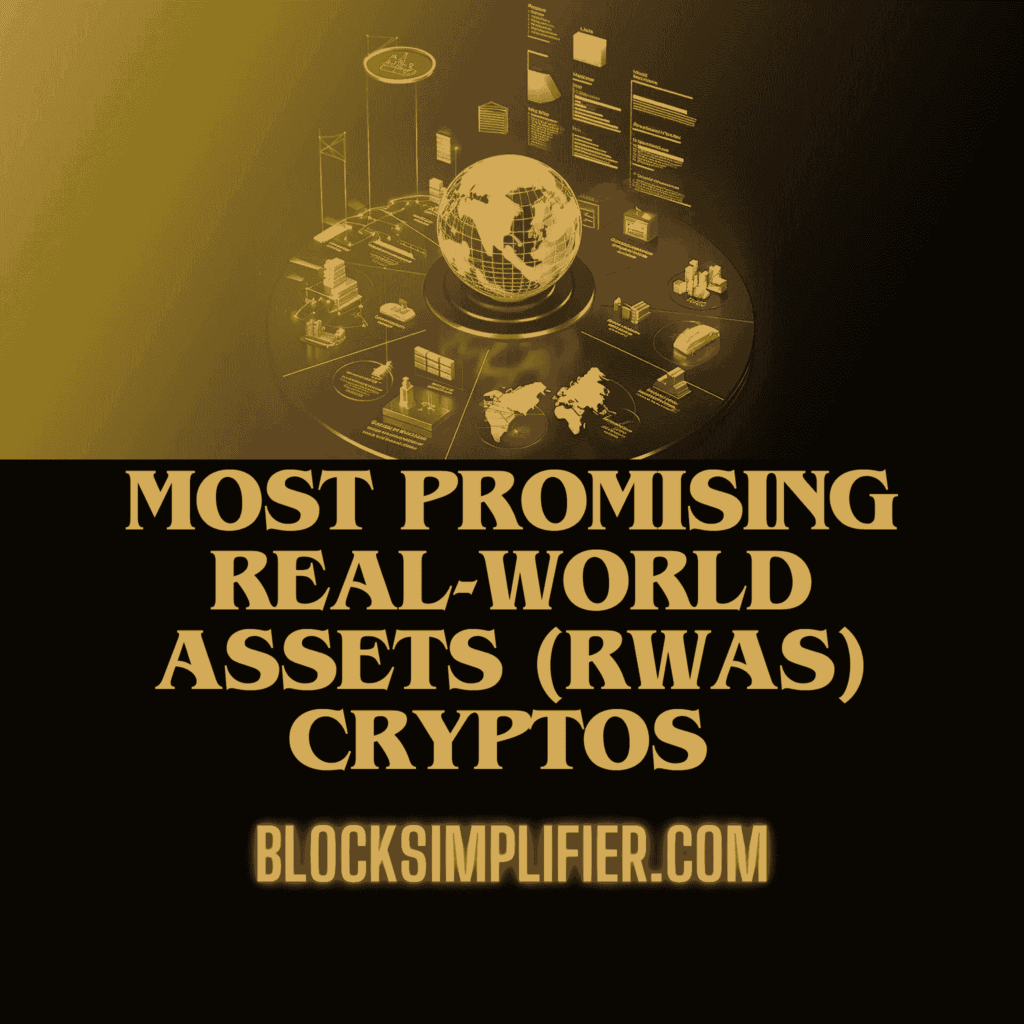The connection between Real-world Assets (RWAs) and decentralized borrowing is the bridge between conventional finance (TradFi) and the entire technological sector offering to investors a way to have actual material assets exposure while benefiting from the blockchain technology. The following have the potential to generate positive returns when well invested:
Table of Contents
1. Maple Finance (MPL)
- Why Invest:
- Specializes in institutional lending, targeting high-quality borrowers with transparent credit assessments.
- Strong appeal to institutions entering DeFi.
- Use Case:
- Institutional borrowing and lending with on-chain transparency.
- Access to credit markets for businesses in need of liquidity.
2. Centrifuge (CFG)
- Why Invest:
- Tokenizing real-world assets (RWAs) invoices, trade receivables, or real estate
- It brings real worth within DeFi by offering different investment options and making it available to small or medium enterprises (SMEs) for financing their invoices.
- Use Case:
- Access to real-world yield opportunities for DeFi users.
- Small and medium enterprises (SMEs) can tokenize invoices for liquidity.
3. Goldfinch (GFI)
- Why Invest:
- A decentralized lending system from which non-underbanked businesses can obtain loans using Collateral.
- Focus on financial inclusion among the emerging markets.
- Use Case:
- Borrowing for businesses without traditional collateral.
- Earn passive income through lending pools backed by RWAs.
4. RealT
- Why Invest:
- Tokenizing real estate assets to fractional ownership, enhancing their accessibility as well as liquidity among retail investors.
- Among the strong campaigns taking place for investment in these times are increasing numbers of people who are excited about real estate.
- Use Case:
- Real estate tokenization for fractional ownership.
- Diversification of portfolios with tokenized properties.
5. Ondo Finance (ONDO)
- Why Invest:
- Focuses on structured products, offering innovative investment strategies like fixed income and yield strategies.
- Bridges traditional investment models with DeFi.
- Use Case:
- Fixed income products for conservative investors.
- Enhanced yield products for high-risk, high-reward strategies.
6. MakerDAO (MKR)
- Why Invest:
- Expanding DAI’s collateral base to include real-world assets.
- Proven stability as the backbone of decentralized stablecoin innovation.
- Use Case:
- Use of RWAs as collateral for DAI loans.
- Stability through diversification of collateral types.
7. Aave (AAVE)
- Why Invest:
- Leading lending protocol with advanced features like flash loans and multichain expansion.
- Strong potential to integrate RWAs into its lending pools.
- Use Case:
- Lending and borrowing with decentralized governance.
- Future incorporation of tokenized real-world assets for borrowing.
8. Compound (COMP)
- Why Invest:
- Focus on algorithmic money markets for lending and borrowing.
- Potential to integrate RWAs for diversified lending options.
- Use Case:
- Secure, decentralized borrowing for crypto and RWAs.
- Earning interest by providing liquidity to lending pools.
9. Synthetix (SNX)
- Why Invest:
- Facilitates the creation of synthetic assets, which can represent stocks, commodities, or RWAs.
- Expanding opportunities for exposure to traditional assets via blockchain.
- Use Case:
- Trading synthetic assets without owning the underlying asset.
- Hedging against market volatility with synthetic derivatives.
10. Liquity (LQTY)
- Why Invest:
- Offers capital-efficient, decentralized borrowing with zero interest rates.
- Potential to integrate RWAs as collateral for loans.
- Use Case:
- Borrowing with minimal fees and no interest.
- Collateral-backed stablecoin issuance (LUSD).
Key Reasons to Invest in RWA and Use These Protocols:
- Bridging Traditional Finance and DeFi:
Protocols like Centrifuge, RealT, and MakerDAO tokenize RWAs, allowing blockchain to interact with tangible assets like real estate and invoices. - Diversification:
RWA integration diversifies DeFi portfolios, offering stability compared to volatile crypto assets. - High Yield Potential:
Lending platforms like Maple Finance and Goldfinch provide opportunities to earn competitive yields by lending to institutional borrowers or underbanked businesses. - Innovation and Accessibility:
Platforms like Ondo Finance and Synthetix bring innovative financial products, making complex TradFi strategies accessible to everyone. - Future-Ready Investment:
As the DeFi ecosystem matures, RWA adoption is expected to grow, making early investment in these protocols potentially lucrative.
By combining real-world utility and blockchain efficiency, these platforms are paving the way for a more inclusive, decentralized, and integrated financial system.
FAQ: Investing in DeFi Protocols with RWA Integration
2. Why should I invest in DeFi protocols focused on RWAs?
Investing in RWA-focused DeFi protocols offers several benefits:
- Diversification: Exposure to less volatile, tangible assets like real estate or trade invoices.
- Passive Income: Earn yield through lending or staking RWAs.
- Innovation: Participate in financial products that blend traditional finance with blockchain technology.
- Early Adoption: Early investment in these protocols could provide significant long-term returns as the market matures.
3. How do these protocols ensure the security of my investment?
Most DeFi protocols employ:
- Smart Contracts: Automated contracts to ensure transparent and secure transactions.
- Audits: Regular smart contract audits by third-party firms to identify vulnerabilities.
- Collateralization: Over-collateralized loans or tokenized real-world assets backing the investments.
4. How do I start using these protocols?
- Step 1: Create a wallet (e.g., MetaMask, Trust Wallet) and connect it to the protocol.
- Step 2: Transfer funds to your wallet (ETH, stablecoins, etc.).
- Step 3: Select the protocol and interact with its decentralized app (dApp) to invest, lend, or borrow.
- Step 4: Monitor your positions and yields through the dApp interface.
5. What risks should I consider before investing?
- Smart Contract Risks: Bugs or vulnerabilities in the code could lead to losses.
- Regulatory Risks: Governments may impose regulations on tokenized assets or DeFi platforms.
- Market Risks: Volatility in crypto or RWA token valuations can affect returns.
- Liquidation Risks: Sudden market movements may cause loans to be liquidated if collateral value drops.
6. How do DeFi protocols tokenize real-world assets?
Protocols like Centrifuge and RealT use smart contracts to digitize ownership of physical assets.
- Assets are appraised and documented.
- They are represented as ERC-20 or ERC-721 tokens on the blockchain.
- These tokens can then be traded, used as collateral, or staked in DeFi platforms.
7. Are there any tax implications for investing in RWAs through DeFi?
Yes, taxation depends on your jurisdiction. Common scenarios include:
- Capital Gains Tax: Applicable when you sell tokens representing RWAs for a profit.
- Income Tax: On rewards earned through staking or lending.
Consult a tax professional familiar with cryptocurrency laws in your country.
8. Can small investors participate in RWA-based protocols?
Yes, fractional ownership through tokenization allows even small investors to participate. For example:
- Buy a fraction of a tokenized real estate property on RealT.
- Lend smaller amounts to businesses on Goldfinch.
9. How do protocols like Aave and Compound handle RWAs?
These protocols are exploring the integration of RWAs into their existing ecosystems by:
- Allowing users to borrow or lend against tokenized RWAs as collateral.
- Partnering with platforms that tokenize assets like invoices or real estate.
10. What are some top-performing RWA-focused DeFi protocols?
Some leading protocols include:
- Centrifuge (CFG): Tokenizes invoices and trade receivables.
- Maple Finance (MPL): Institutional lending.
- RealT: Tokenized real estate.
- Goldfinch (GFI): Lending to underbanked businesses.
- Ondo Finance (ONDO): Structured investment products.
11. Are these protocols cross-chain compatible?
Many protocols are adopting cross-chain solutions for broader accessibility. For example:
- Centrifuge uses Ethereum and Polkadot ecosystems.
- Aave and Compound are multichain, supporting Ethereum, Avalanche, and more.
Cross-chain bridges like Synapse and Stargate Finance further enable interoperability.
13. Are returns from these protocols stable?
Returns vary:
- Lending protocols like Maple Finance and Goldfinch offer relatively stable yields.
- Real estate tokens from RealT provide regular rental income.
However, factors like market conditions and protocol adoption affect overall returns.
14. How do protocols like MakerDAO incorporate RWAs?
MakerDAO is integrating real-world asset collateral to back its stablecoin, DAI. This diversification strengthens the stability of DAI and provides new use cases for the protocol.
15. Is investing in RWAs on DeFi protocols better than traditional finance?
Advantages:
- Transparency: All transactions are on-chain and verifiable.
- Accessibility: No intermediaries or minimum investment thresholds.
- Global Reach: Open to anyone with internet access and a wallet.
Challenges: - New technology with risks related to security and regulation.



